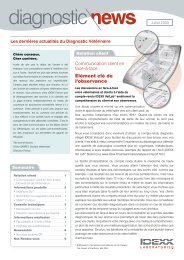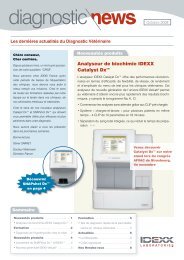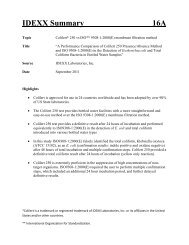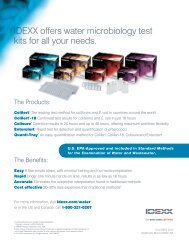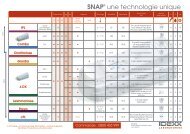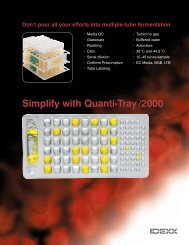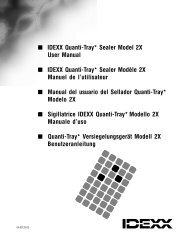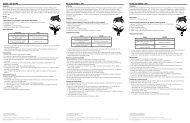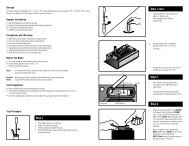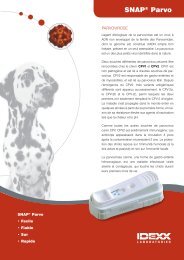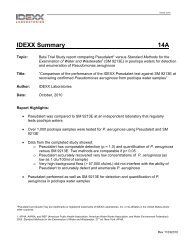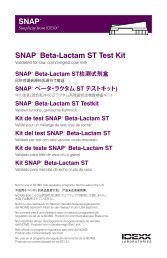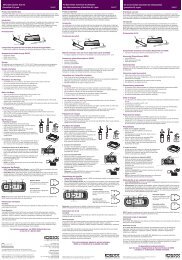ENVIRONMENT AGENCY The Microbiology of Drinking Water (2002)
ENVIRONMENT AGENCY The Microbiology of Drinking Water (2002)
ENVIRONMENT AGENCY The Microbiology of Drinking Water (2002)
- No tags were found...
You also want an ePaper? Increase the reach of your titles
YUMPU automatically turns print PDFs into web optimized ePapers that Google loves.
D7.4 MPN reaction pouches as supplied by the manufacturer (for example, a 51-wellsystem) and associated heat-sealing equipment.D7.5 Ultra-violet long wavelength (365 - 366 nm) lamp, and viewer.D7.6 Colour and fluorescence comparator as supplied by the manufacturer.D8Media and reagentsCommercial formulations <strong>of</strong> these media and reagents are available. <strong>The</strong> performance<strong>of</strong> all media and reagents should be verified prior to their use. Variations in thepreparation and storage <strong>of</strong> media should also be verified.D8.1 Colilert® 18 medium (5) .<strong>The</strong> medium is a commercially available formulation provided in sachets and issuitable for single samples. <strong>The</strong> medium is a chemically defined formulation withminimal nutrients and substrates for the specific detection <strong>of</strong> the enzymesβ-galactosidase and β-glucuronidase.D9Analytical procedureD9.1 Sample preparation<strong>The</strong> volume, or dilution, <strong>of</strong> samples should be chosen so that not all the wells show apositive response. For treated waters, 100 ml <strong>of</strong> sample will generally be appropriate,whilst for contaminated waters, appropriate dilutions should be prepared, and 100 ml<strong>of</strong> diluted sample used. When preparing dilutions use sterile distilled, deionised orsimilar grade water. Buffered solutions should not be used as they may adverselyaffect the performance.D9.2 Sample processing<strong>The</strong> sample, or appropriate dilution, (usually 100 ml) is decanted into a sterile bottlecontaining anti-foaming agent. Following the manufacturer’s instructions, the contents<strong>of</strong> one sachet <strong>of</strong> medium is then aseptically added. After capping the bottle, thecontents are gently agitated to ensure dissolution <strong>of</strong> the medium and then the bottle isleft to stand, typically, for a few minutes to allow completion <strong>of</strong> dissolution anddispersal <strong>of</strong> any air bubbles. <strong>The</strong> contents <strong>of</strong> the bottle are then added to the MPNreaction pouch, which is then sealed in the apparatus provided by the manufacturer toproduce a 51-well reaction pouch. Prolonged exposure <strong>of</strong> the inoculated reactionpouch to direct sunlight should be avoided as this may result in hydrolysis <strong>of</strong> thespecific substrates causing false-positive reactions. <strong>The</strong> time between the inoculation<strong>of</strong> the reaction pouch and the beginning <strong>of</strong> the incubation stage should be as short aspossible and no longer than 2 hours.Sealed MPN reaction pouches are then incubated, ‘well-side’ down, at 37 °C for notless than 18 hours and not more than 22 hours.46



